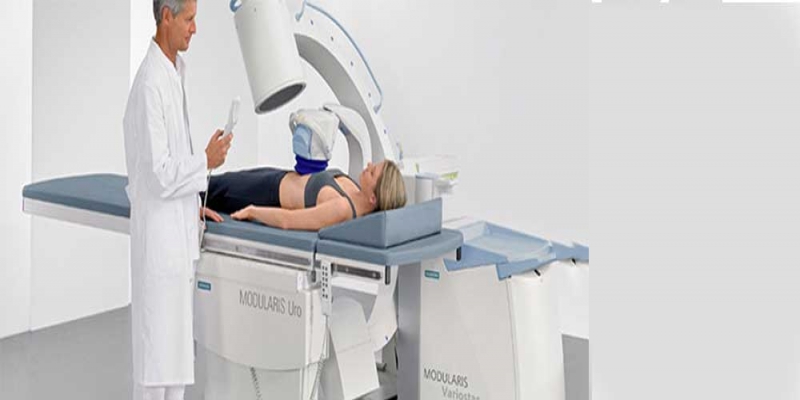Kidney Stone Removal: A Modern Method for Treating Painful Scourge
2018-05-04 / RG STONE HOSPITAL / Urinary / Kidney Stone

Kidney stone treatment has gone through drastic developments and changes in the last two decades. A modern surgery known as Lithotripsy helps to break kidney stones to allow for removal through normal urination without making any incision in the body.
What is Lithotripsy??
It is the most common and effective treatment for kidney stones, Lithotripsy uses shock waves to fragment the stones in the ureter, kidney and bladder. There is no incision required as the shock waves are targeted on the stones from outside the body. When it comes to treating urolithiasis (stone formation in the bladder and urinary tract) without any pain, Extracorporeal Shock Wave Lithotripsy and Ureteroscopic Lithotripsy are the two most effective and successful procedures of the modern time.
Extracorporeal Shock Wave Lithotripsy (ESWL)
Extracorporeal Shock Wave Lithotripsy (ESWL) is the most common type of lithotripsy,it is a less invasive and a painless kidney stone removal process.
The Procedure Involved
This procedure uses high frequency, electromagnetic sound waves to target the kidney stones. The ultrasound shock waves break the larger stones into small dust-like particles so that it can excrete from the kidney through urine. No anaesthesia is used during this procedure but painkillers are given to individuals to deal with the discomfort.
The Advantages of Extracorporeal Shock Wave Lithotripsy
- No cuts or incisions are made in this procedure.
- Most effective to treat stones in upper ureter and kidney.
- Stone size ranging from 10-20mm is targeted.
- Low risk of infection.
- Same day discharge from hospital.
- No severe pain except minimal discomfort.
Ureteroscopic Lithotripsy with Holmium Laser
If we talk about most effective, painless and minimally invasive procedures, Ureteroscopic Holmium Laser Lithotripsy is the latest and most popular one. This procedure uses a small telescope and Holmium Laser, to break the stones stuck in the urinary tract in tiny fragments so that it can pass through urine. This procedure is used to treat stones from ureter, gallbladder, kidney and the urethra as well.
The Procedure Involved
This procedure is performed under spinal anaesthesia. A small, flexible scope is inserted through the urinary tract to reach the kidney without making an incision. Then a
Holmium Laser is used to crush the stones into small dust-like particles so that it can be flushed out of the body through normal urination.
Read More: 3-4 Litres Of Water Consumption Everyday May Help Remove Your Kidney Stone!
Once your urologist locates the stones, he targets it with the laser to break them into tiny particles. These particles can be extracted by your urologist or flush out from your system with urination. Once the stones are removed, your doctor may fix a stent to keep the ureter open to help you with urination. The stent will be removed after 10-12 days.
The Advantages of Ureteroscopic Lithotripsy with Holmium Laser
- Most effective way to cure kidney stones as well as bladder and ureteral stones.
- Since it is performed under anaesthesia, patients don’t feel pain.
- Very effective to remove larger as well as multiple stones.
- It can break even hard stones into sand-like particles.
- Irrespective of the size, location and hardness of stones, this process ensures high success.
- Same day discharge from hospital and patients can resume daily routine within 2 days.
- No risk of Steinstrasse (blockage of ureter), a common complication individuals may face after Extracorporeal Shock Lithotripsy procedure. Eliminating the need for painful kidney stone surgery, Lithotripsy has made the treatment of urolithiasis less invasive and painless. Depending on the severity of the condition, individuals may require more than one session of lithotripsy to cure kidney stone problem.
Categories
Hernia Repair
Appendicitis
Piles
Urological Treatment
Hernia treatment
Enlarged Prostate (BPH)
Gall Bladder Stone
Urinary / Kidney Stone
Vitamins
Indian Health Care System
Exercise
Obesity
Female Urinary Incontinence
Single Incision Laparoscopic Surgery (SILS)
Kidney Cancer
Bladder Cancer
Ovarian cancer
Nephrology
Bariatric Surgery
Kidney Function Test
Female Urology
Radiation Therapy
Alcoholic Fatty Liver
Liver disease
Gastroenterology
Kidney Disease

